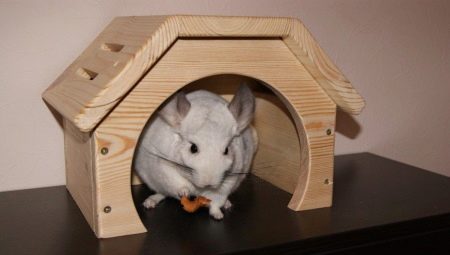It is no secret to anyone that before acquiring a pet, it is first necessary to take care of where he will live. No, of course, he will live with you, in your house. But everyone should have their own little corner, no matter whether it is a dog or a cat, or maybe even a chinchilla.
It is especially important to choose a house for small and active animals. Chinchilla is just such an animal.
Now in any pet store you can find a variety of houses, cages or display cases for rodents that meet all standards or dimensions: from small to small to medium, and even large.
Below we will consider which house will still be better for chinchillas, how to choose the material and content.
What is a house for?
Chinchillas are animals that love secluded places. There were times when a young animal did not have its own nook, and he became depressed, and then fell ill.
A house for any creature is a place where you can relax, sleep and relax, here they will not once again bother and disturb.
Housing is also needed if you subsequently decide to breed animals. For a female chinchilla, the house will be the very place where she will be comfortable in raising her offspring and looking after him, not trying to find a secluded corner.
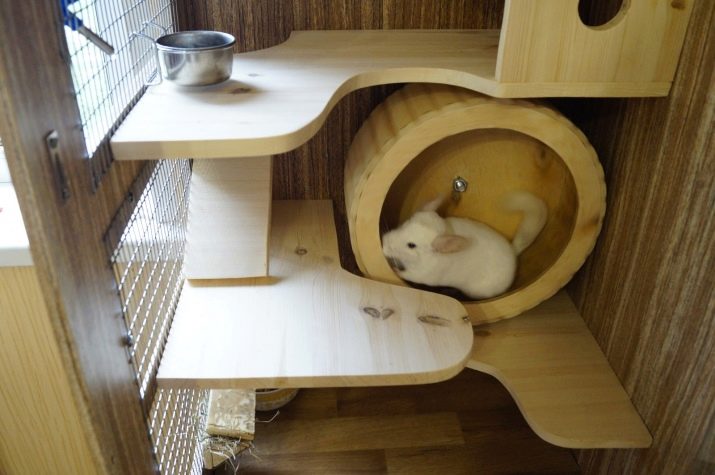
From the foregoing, it is clear that the animal loves solitude, so the house itself - no matter if it is equipped in a cage or in a showcase - must be placed in the darkest and darkest corner.
Often, the bottom of the cage becomes the optimal place for the house, so as not to worry about the pet again. But if you decide to install an overnight stay for a small animal on a shelf in a design impulse, you should securely attach the walls of the structure to the rods and shelf.
This is because the chinchilla can steal the house or move it to the place where it wants, and if the house is on a shelf, then the pet can fall and get injured with the house.
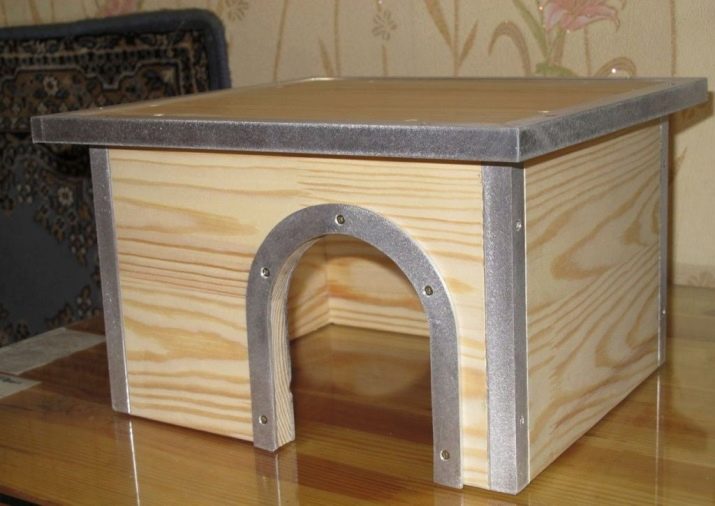
Kinds
A common material for making animal houses is wood. Budget and affordable material from which you can even independently build a house.
The next most popular is plastic, less often even ceramics. You can find wicker houses or made of twine on the Internet. But they are not very practical, as the rodent simply gnaws at his house.
A tree is an optimal variant, common, and it is easy to work with it. You can give it a variety of shapes, relief and appearance.
If we consider a small-sized cage, then the shapes are most often found in rectangular, round, oval, rarely triangular houses. You can, of course, find more sophisticated houses - castles or Native American wigwams. Here everything rests, if not in fantasy, then in the price moment.
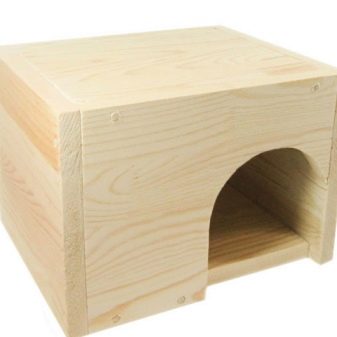
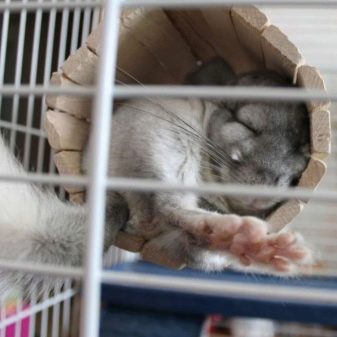
In order not to be mistaken with the shape of the house, you should remember the following points.
- The size of the house is selected based on the size of the rodent, its height, density. The passage should be free, not impede movement, also the inside area of the house should be free.
- No small or narrow holes. A chinchilla foot may get stuck in such holes, which can lead to injury, and if the “window” appears to be large enough, the chinchilla will try to get out and get stuck through it.
- The more doors or windows, the better. Air circulation is very important for a pet.
- If the house will be at the bottom of the cage or display case, then it is worth choosing a dwelling without a bottom, as it will be easier and more convenient to clean.
- The sharp tips at the locks or domes will impress your guests, but it can be dangerous for a young animal. If the house is at the bottom of the cage, there is a good chance that the pet from the upper shelves can fall off and fall to the tip of the dome, get injured.
- Do not save on the number of houses if you put several chinchillas in one cage. It is vital for them to have their own house, and if there is one house, then there will be a fight between the pets for a place of residence.
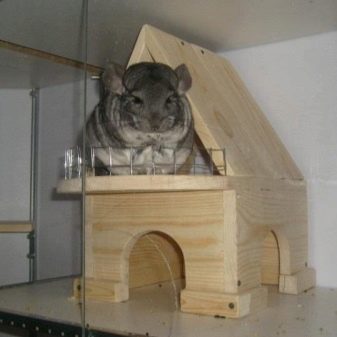
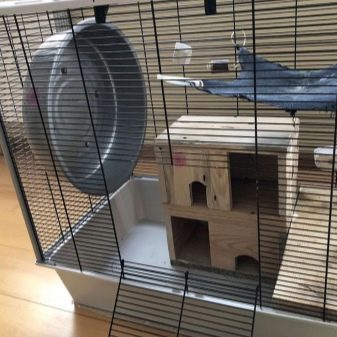
Wooden houses
Any material has certain advantages, but also has disadvantages. Before choosing, you should always consider the material from different angles.
The tree does not have any restrictions, houses can be either one-story or two - three-story. It all depends on the desire of the owner. The house can be equipped with a fence or a small veranda, on the side you can attach a ladder or even a running wheel. Due to such compactness, space is saved, which plays an important role if the cell itself is small in size.
The positive aspects of wood as material for the house.
- The most common plus is accessibility. In pet stores on the shelves of such wooden houses a large number. So the choice for your pet will not be so difficult.
- Price. Due to the use of inexpensive material, the price of the house will be low. Of course, if you do not order a house from the designer.
- Convenient to clean: just brush the house, wipe with a damp cloth and you're done.
- Eco-friendly and safe material.
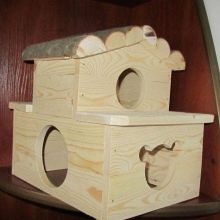
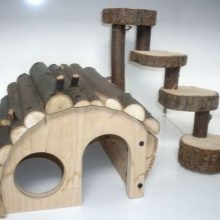
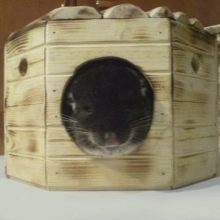
The negative aspects of using such material.
- Chinchillas love to gnaw everything, and their own houses are no exception. If the tree from which the dwelling was made was too thin or had small details, there is no doubt that the rodent feasted on them. It turns out that the house will need to be replaced after some time.
- Odor absorption. If the pet does not have its “agreed” toilet seat, then, most likely, in the house where the smell of urine accumulates, the animal simply does not want to live anymore.
- Before buying any wooden products, you should clarify whether it is varnished., because a chinchilla will definitely try a tree for a tooth, and if it is varnished, then the rodent can simply be poisoned. The same is with glue.
- The presence of industrial odor. Perhaps if the animal does not want to move into a new house, it is worth ventilating the product, as it could leave traces of smell from the factory.
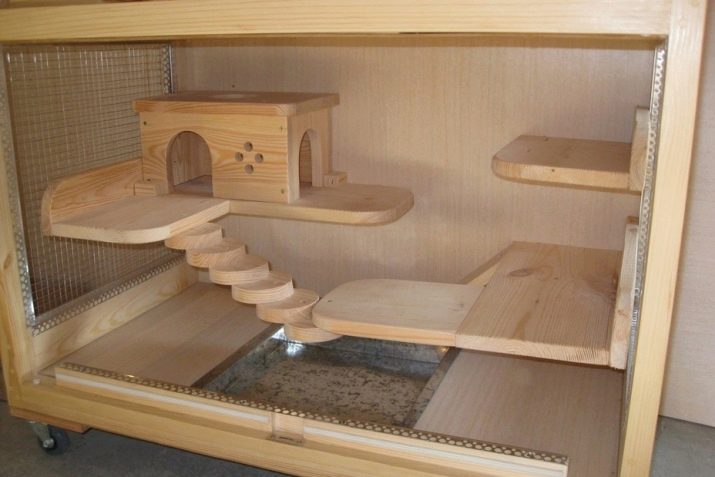
Ceramic houses
Ceramics as a material is not so in demand as wood products.
Perhaps not everyone knows about such material, perhaps they find it not so practical. But accessories in the form of mushrooms and trees give an entourage, and they look very appropriate and beautiful, and it’s easy to equip the cage with them.
But still this material is not deprived of positive qualities:
- clay objects are very beautiful and look like real ones, and such accessories will become an interesting addition to the cage;
- the houses are baked, they do not have nicks, so if the entrance opening is large, then the animal will comfortably run into the house and run out;
- very weighty products are made from ceramics, so the house will stand reliably under its own weight, and the animal will not be able to drag it;
- a clay structure will last longer; a rodent is unlikely to sharpen its teeth about it;
- easy to clean, wash and not absorb odor;
- Due to its composition, the temperature inside the clay house is always cool, which will have a very beneficial effect on the animal in hot, hot weather.
The negative sides of such a dwelling for a chinchilla:
- ceramic houses in simple and small pet stores are rare, so inaccessibility can be considered a minus;
- there is an alternative - to make to order, but then the price will “jump”;
- in some models, poor-quality paint is used, namely, chemical glaze, which is capable of releasing toxins, which is very harmful to the animal.
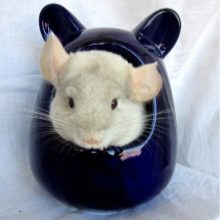
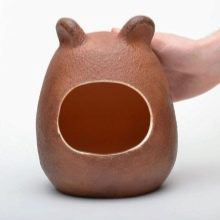
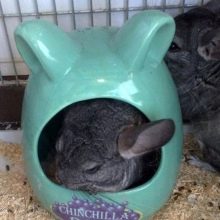
Do it yourself
Often, many thought about how to independently build a house for their pet. We watched various master classes on the Internet, tried to understand something in the drawings. They even bought plywood. But always something did not work out. The following are simple examples of self-building a wooden chinchilla house.
Materials you will need:
- plywood about 1.5–2 cm thick;
- sandpaper or grinder;
- hacksaw;
- pencil;
- roulette;
- drill;
- furniture dowels.
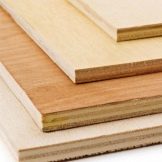
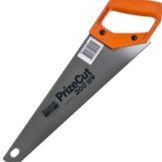
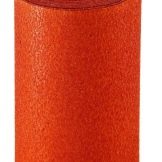
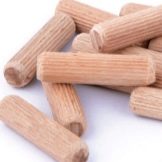
The number of plywood is varied from the calculations, dimensions and the number of floors in the house. If there are a lot of floors in the house, then you should first make a layout or drawing, where the most important points in the measurement will be entered.
In the drawing, it is better to note where the entrance, window, staircase, wheel will be located. All this is necessary in order not to keep too much information in mind. Do not be distracted by the fact that you can miss or forget something.
You can draw up a multi-level drawing, that is, for each floor you have your own sheet, or, if you are a more experienced master, you can sketch everything in the layout.
A simple chinchilla house will not be difficult to execute. The average house for one small chinchilla is approximately 280 * 185 * 160 mm.
It turns out that these dimensions must be applied to plywood, cut the roof and walls of the house. On the resulting walls we draw a door, windows.
The number of holes is optional.
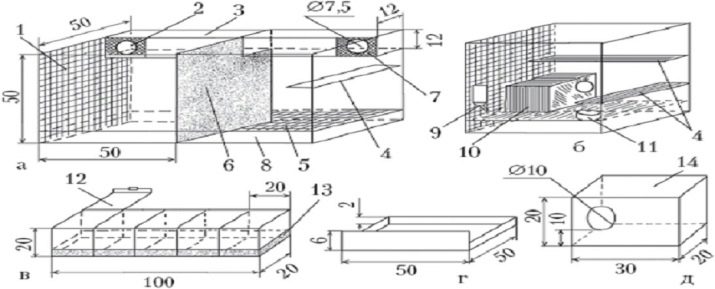
Using a hacksaw, all holes are cut.
All edges are sanded before bonding. Then, in order not to use bolts, glue or screws, holes for dowels are made in the joints of the plywood with a drill. It is with dowels that it is safest to fix plywood among themselves.
Before you put the house in a cage, it should be wiped with a damp cloth to wipe off all dust and fine mote. And also aerate.
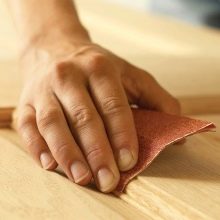
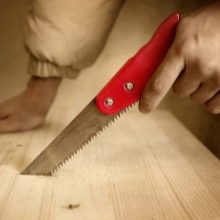

Arrangement of a cell or display case
Chinchilla is a very active animal, movement for him is life. And this means only one thing: the larger the area for running, the better. Do not save on the spot.
The optimal size of the cell is approximately 70 * 50 * 100 cm (in the ratio of length / width / height).
In addition, the larger the area of the cage or display case, the more different accessories you can buy over time in a cage for your animal.
What exactly should be inside the cell or display case.
- Shelves. There should be at least two of them, but it is better if you can do more. Some cells have shelves that come with the kit.
- Drinking bowl and feeder. The pot should not be fixed in the cell walls, as there is a risk that the chinchilla may taste it. A feeder should be made of ceramic or stainless steel.
- Attributes for the game: wheel, hammock, tunnel. These are optional elements in the cell, but it is better if any of this happens anyway. Since the animal is an active creature, it needs to do something somewhere. These auxiliary elements are precisely aimed at this.

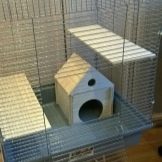
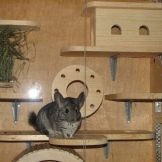
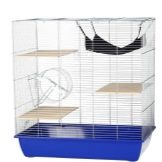
About what types of houses exist and how to make them, see the next video.
